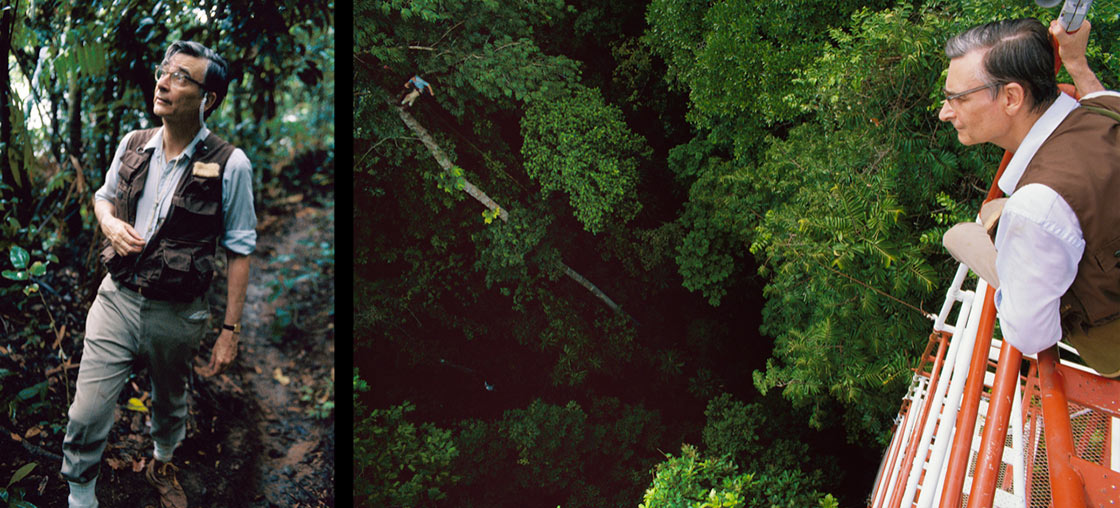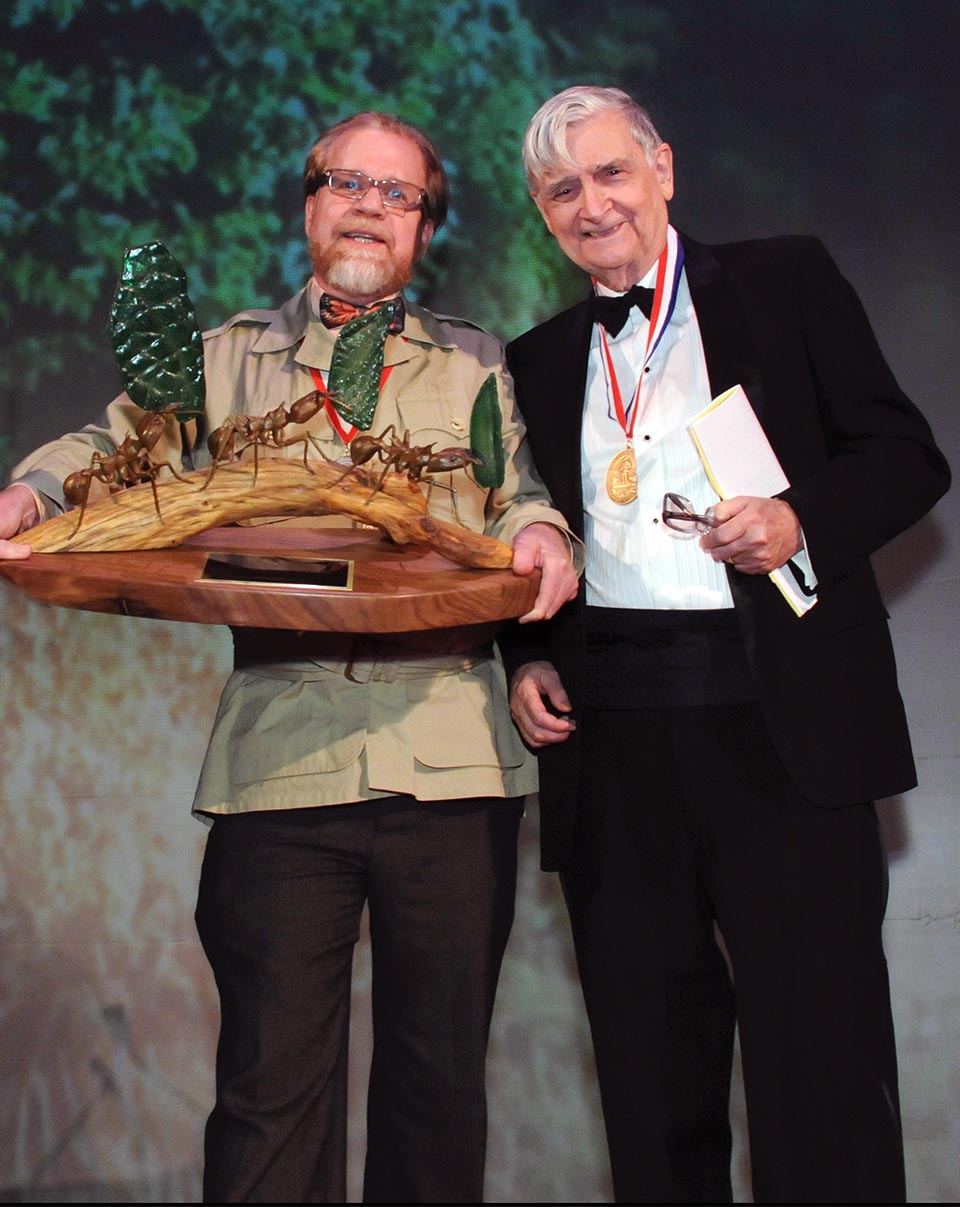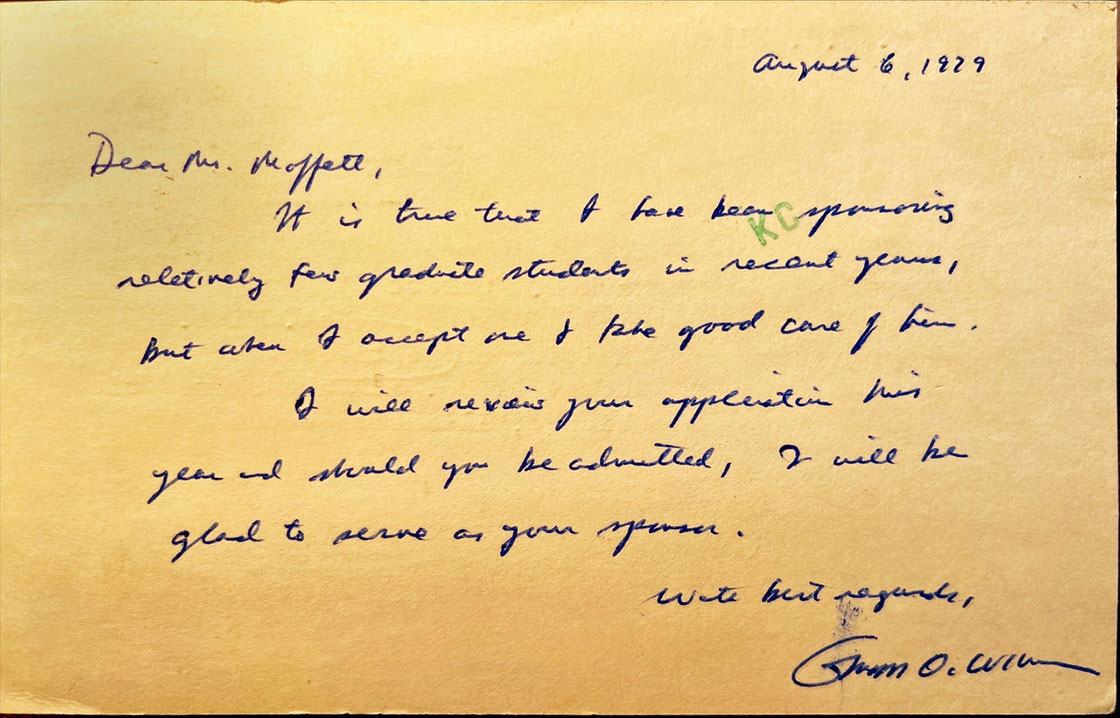The loss of the celebrated biologist Edward O. Wilson last week will be mourned by legions of readers for whom his work was a beacon, shaping the public understanding of evolution, clarifying the place of our species in this world, and illuminating the value of biodiversity and the need for a global commitment to conservation. For those who were mentored by him, however, his death means the loss of a staunch ally and cherished friend whose optimism and support has kept us going throughout our careers. It’s impossible for me to imagine living without Ed’s voice in the background which, for me, as for millions of others, first entered my life by way of his writing.
As a junior high school student in the early 1970s I was enticed to join a science book club by the offer of three books for a buck. I was riveted by one of my choices, The Insect Societies, from the day I cracked its cover. The book used a thicket of technical terms like dulosis and polydomy to describe ants, wasps, bees, and termites, and there were exotica on every page. To me, the activities of these insects were as enthralling and mysterious as the lumbering dinosaurs I had dreamed about virtually from infancy.
The dust jacket pictured its author, Edward O. Wilson, in a natty jacket standing in his lab at Harvard University, where he was a professor of zoology. “Mr. Wilson,” the author bio read, “has published more than 100 articles on evolution, classification, physiology, and behavior — especially of social insects and particularly of ants.”
In 1979, in my senior year at Beloit College, a small liberal arts school in Wisconsin, Insect Societies was still my bible. I steeled myself to write a letter to Wilson expressing my admiration for his book, and in his warm, handwritten responses he encouraged me to visit (I still have his note, presented herein, at the top of this tribute).
When Professor Wilson opened the door of his office, I greeted him with “Hi, Ed!” and a firm, two-fisted handshake. If my casual attitude offended him, he gave no sign. It didn’t take long before this titan of science was spreading pictures of ants across his desk and over the adjacent floor and swapping stories with me as if we were boys. The hour we talked would become seared in my mind as one of a handful of my life’s most precious experiences, and I left with my head full of ideas. I later came to realize how scarce this pure joy was, how his contagious love of his work stood out as special in academics, where it is a distinguishing characteristic of just a few of the world’s greatest scholars.
After being accepted into the graduate program at Harvard, I was told that students were expected to call professors by their last names until they had finished the PhD. Having already set the standard, I continued to use Ed in conversation with Dr. Wilson, who didn’t seem to mind and largely let me be free to develop in my own direction, with guidance via spirited chats about my ideas.
Ed taught me that not all biologists had to become indentured to labs and high-tech equipment — much could still be done with a hand lens and paper and pencil in the field. As a young man, Ed had made a name for himself by mapping the spread of the invasive fire ant through the American south. At a holiday party, he described his own years as a student looking for fire ant nests along roadsides in Alabama, dropping specimens into alcohol to study later. A police car would occasionally pull over to see what he was doing. “Killing ants,” he told them. Ed imitated how the cops would draw out their response into long syllables: “She…eee…IT, boy — good job.” He continued with a direct-observation approach to science throughout his career, teaming up with mathematicians and other specialists when he needed to get a special project done.
The view I came to from watching Ed work was that the best course for my career was to find a little-known organism or idea and claim it, for a time, as my own. I could then, like an old-fashioned adventurer studying a map to prepare for a journey, pinpoint those regions likely to yield rich rewards. I decided a previously unstudied group of marauder ants would be my version of Ed’s fire ant or Jane Goodall’s chimpanzee.
As I embarked on my research overseas, I wrote Ed letters from India and Malaysia asking for guidance about problems that vexed me. His correspondence — he replied every time — contained needed encouragement, a few sentences of detailed discussion and always a word of thanks that I had written. He had relatively few students, with only 27 PhDs matriculating under him over his four decades as a professor, encouraging them to become skilled at working out their own problems and to find their unique path. His care and effectiveness are evidenced by the expertise of his students developed in myriad subjects: conservation, biogeography, language and music, human reproduction, rhesus monkeys, butterflies, beetles, bumblebees, wasps, and, of course, ants. He was supportive of my eclectic career choice, which has been to integrate science with photography, writing, outreach to scholars in disciplines like psychology, and public speaking.
When it came time for me to defend my thesis, usually an excruciatingly sober affair, Ed’s playfulness was on full display. To get things rolling, instead of giving the expected summary of my background, he stood up and briefly announced, “Our speaker needs no introduction.” I countered this good-spirited gesture by saying, “Thank you… Professor…Professor…,” pretending to forget his name. After I had wrapped up my hour-long talk, he challenged me, deadpan, to summarize my findings in Latin. I admitted I couldn’t but offered to put my legs behind my head instead — which I did, to his delight — and then the serious questions began.
Ed’s generosity was manifest throughout my time in grad school and beyond, starting with my years as curator of Harvard’s vast collection of preserved ants. It was rare indeed to hear an unkind word and he was drawn to the creative spark in others. He hired Stefan Cover to work in the collection after Stefan proclaimed he could “mount ants on pins like a Michelangelo.”
Being tied to his office much of each year, Ed enjoyed hearing about my expeditions to seek out unusual species at far corners of the world. He shared with me his early explorations making important discoveries about the evolution of ants in places like Sri Lanka and New Guinea. Once we took the seven-foot tribal blow gun I had brought back from a remote part of Colombia and practiced hitting a target at the far end of the hallway. Over sandwiches from his favorite food truck, we talked as well about scientific questions, many of them quirky, like the flexibility of ant behavior — including the fact that ants have individual personalities (those ants that consistently worked the hardest, for example, he and colleague Bert Hölldobler called “elites”), and how my marauder ants appeared to differ from one colony to the next, with some colonies more aggressive than others (such differences would first be proven to exist years later for other species).
My proudest experience with Ed occurred when we climbed a research tower at Smithsonian’s field station on Barro Colorado Island in Panama, where I had the honor of introducing him to my favorite habitat, the forest canopy. Scanning the vegetation, we talked about the architecture of plant communities and how this structural complexity made it possible for so much biodiversity to exist in the treetops, then dropped ants to watch them glide off to the nearest tree; all the while we made sure my professor kept his safety line firmly clipped to the metal scaffolding.

Photographs of E. O. Wilson in Panama, taken by Mark Moffett in 1990. The image at right shows Wilson scanning the treetops near the summit of a research tower on Barro Colorado Island in Panama — across from Dr. Wilson, on the far left of the picture, his graduate student John Tobin ascends a tree on a rope. (Copyright Minden Pictures. All rights reserved.)
But I was the one with the mishap that day. I left Ed up the tower with grad student John Tobin so he could watch me climb an adjacent tree by rope. After ascending more than 100 feet I found myself abruptly flung upside down. For one unreal second I struggled to figure out what had happened as all my insect and camera gear clattered together below my now inverted head. Then I grabbed my harness, realizing it had snapped apart and was threatening to slide down my legs (at which point I would plummet to earth). I recall Ed asking “what’s up?” and me, trying to hide my panic, shouting back “give me a moment…just a moment…” After I managed to reattach the harness and rejoin Ed, I told him what had happened: I had accidentally hit a release lever on the harness. In response, he gave me a bit of wisdom that I value to this day: never buy climbing gear that advertises a “quick release.”
Through a friendship that lasted more than forty years, I came to appreciate Ed’s special combination of curiosity, obsession with getting at the truth, capacity for hard work, humbleness, and irrepressible optimism. On another day Ed appeared in my office waving a manuscript with a grin. “I had a paper rejected…it was bound to happen eventually!” His decades-long assistant Kathy Horton tiptoed in soon after to tell me he’d received rejections before. Ever the optimist, he would forget each time.
Ed knew that he would have a place in history but was no egotist anxious about how others perceived him — or even concerned with looking a bit foolish. For a while he practiced a yoga move he called “sun salutation to the ants” where all could see, lying with eyes at ant-level on the floor, then stretching to the sky. A story former student Gabriela Chavarria told me may shed light on his self-perception. During one of Ed’s weekly lunch meetings with students, the ethnobotanist Richard Schultes walked in, boasting that Sean Connery would be playing him in the movie Medicine Man. When one of the students asked Ed which actor he thought would be suitable to portray Ed on the big screen, he said — in all earnestness — “Mister Rogers.”
How productive Ed was! During my early days at Harvard, I passed Kathy as she asked Ed if he had sufficient paper for a weekend of writing. Ed glanced down at what I saw as a dauntingly thick shrink-wrapped set of legal pads under his arm, a look of concern crossing his face.
“Maybe not,” he said.
I immediately thought of Ed filling those reams with his minute handwriting, page after page of the elegant, precisely laid out prose that, by the standards of the rest of us, would barely need an edit. Though I had grown up on the works of this double Pulitzer Prize winner, it was in that moment that I understood how far beyond me and so many of my peers lay the towering intellect and matchless style of the visionary thinker and exceptional human being who had become both my hero and my abiding friend. ![]()

During a 2009 ceremony honoring Edward O. Wilson at the annual Explorers Club dinner, Mark Moffett (left) presents Dr. Wilson with a sculpture by the artist Gary Staab of three leafcutter ants, which was based on a photograph taken by Moffett. (Photo by Craig Chesek © The Explorers Club)
About the Author
Over six years, as an entomologist at the Smithsonian Institution and visiting scholar at Harvard in human evolution, Dr. Mark W. Moffett built a synthesis of how societies stay together and what causes them to fall apart, across species and in humans right up to the present day. The result is a book that brings together biology with modern psychology and anthropology with surprising insights. Describing The Human Swarm: How Our Societies Arise, Thrive and Fall, Kevin Kelly, founder of Wired magazine, tells his readers to “read this manifesto if you like to have your mind changed.” Moffett is a fellow of the Skeptics Society. His website is www.doctorbugs.com.
This article was published on January 5, 2022.















